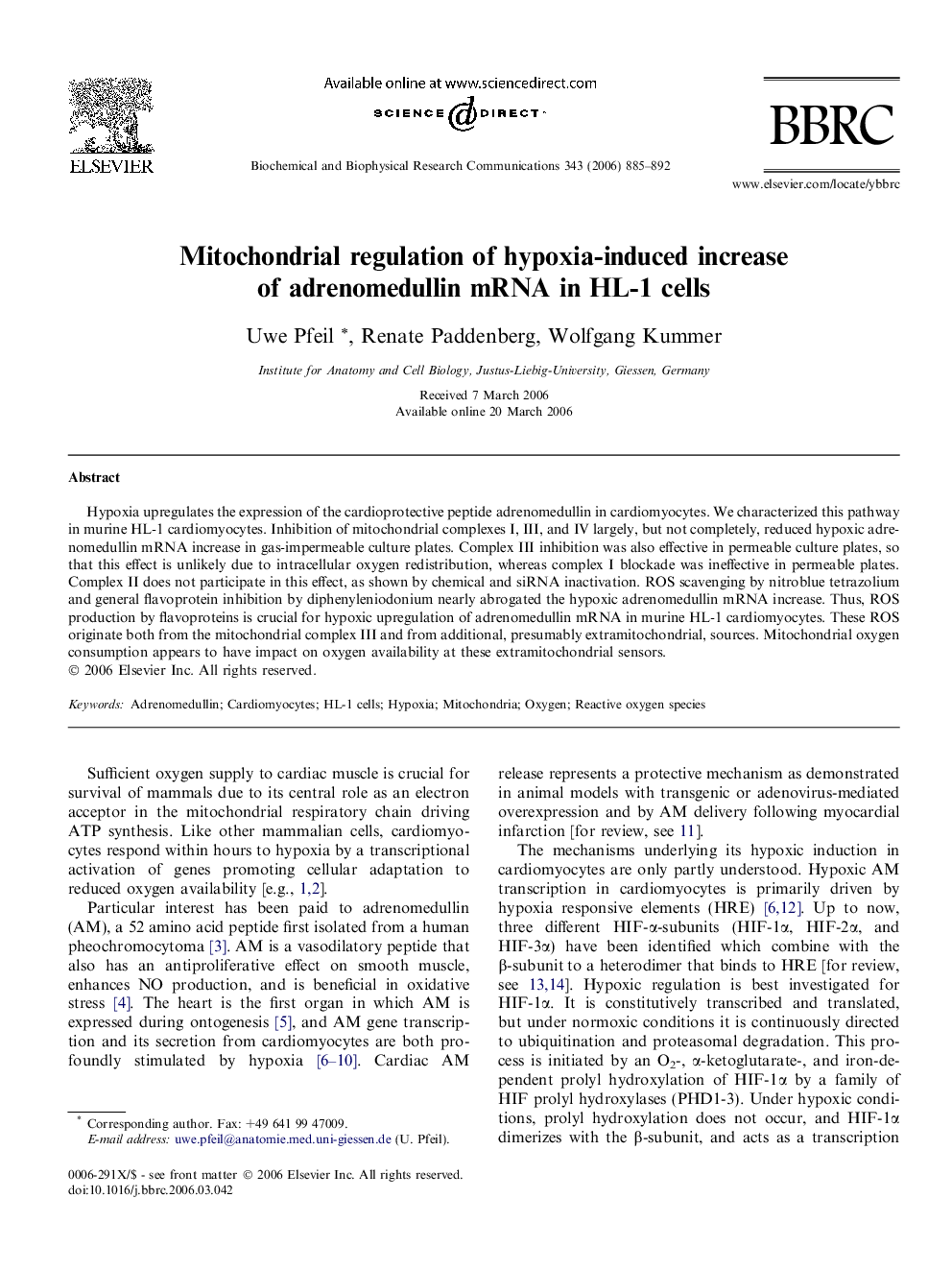| Article ID | Journal | Published Year | Pages | File Type |
|---|---|---|---|---|
| 1939848 | Biochemical and Biophysical Research Communications | 2006 | 8 Pages |
Hypoxia upregulates the expression of the cardioprotective peptide adrenomedullin in cardiomyocytes. We characterized this pathway in murine HL-1 cardiomyocytes. Inhibition of mitochondrial complexes I, III, and IV largely, but not completely, reduced hypoxic adrenomedullin mRNA increase in gas-impermeable culture plates. Complex III inhibition was also effective in permeable culture plates, so that this effect is unlikely due to intracellular oxygen redistribution, whereas complex I blockade was ineffective in permeable plates. Complex II does not participate in this effect, as shown by chemical and siRNA inactivation. ROS scavenging by nitroblue tetrazolium and general flavoprotein inhibition by diphenyleniodonium nearly abrogated the hypoxic adrenomedullin mRNA increase. Thus, ROS production by flavoproteins is crucial for hypoxic upregulation of adrenomedullin mRNA in murine HL-1 cardiomyocytes. These ROS originate both from the mitochondrial complex III and from additional, presumably extramitochondrial, sources. Mitochondrial oxygen consumption appears to have impact on oxygen availability at these extramitochondrial sensors.
